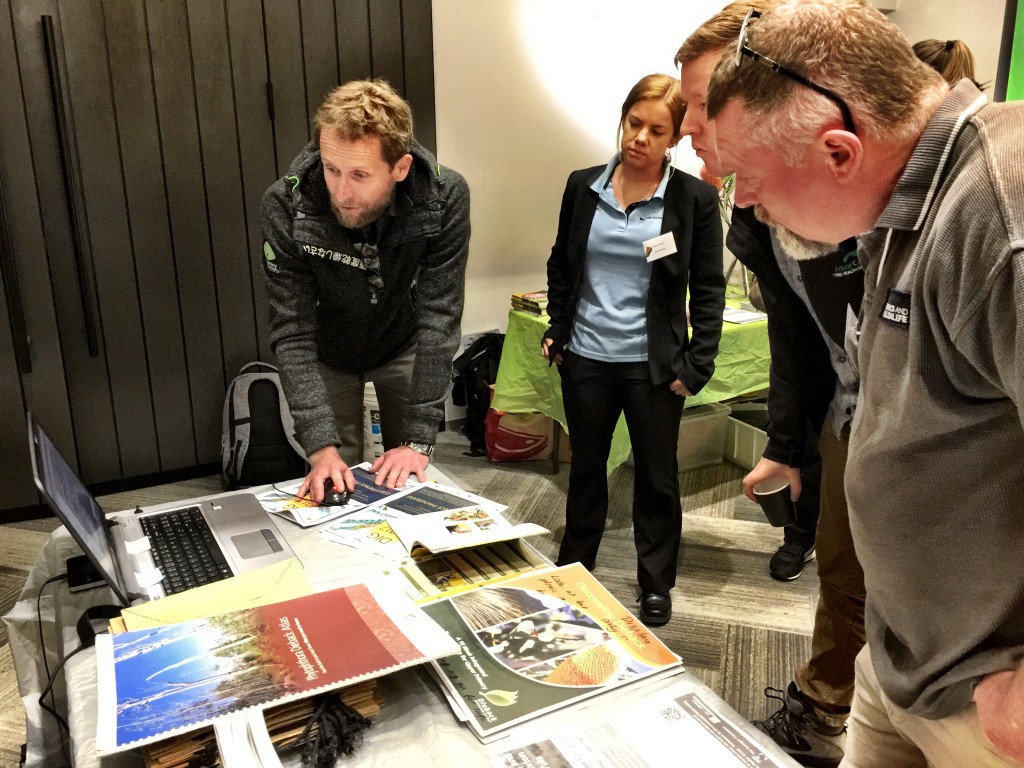Tracey and I recently attended the 2017 Dieback Information Group (DIG) Conference, held at Murdoch University. The conference theme this year was ‘Threatened Species and Communities” – with the aim to recognise the impact that Dieback has on WA’s megadiverse environment in the south-west. This was exemplified in the keynote address by Professor Stephen Hopper (UWA, Albany) in his presentation ‘Dieback and Kwongan – novel perspectives from an ancient diversifying flora’.
On the day prior to the conference South Coast NRM’s Tilo Massenbauer and Tracey ran training sessions in both QGIS (an open source GIS platform) and the Dieback Information Delivery and Management System (DIDMS, which is based on our GRID product) at Gaia Resources HQ. During the conference they also held demonstrations of the DIDMS Database during breaks, and were able to show and interrogate the impressive array of data within DIDMS that Tilo and the team have aggregated.
Tilo Massenbauer and Tracey Cousens held demonstrations of the DIDMS Database
A number of our clients were also presenters at DIG, including:
- Professor Giles Hardy (Murdoch Uni) who presented a retrospective of the last 25 years of Phytophthora Dieback research.
- Dr Tegan Douglas (Birdlife Australia WA) who presented Birdlife’s perspective on Phytophthora Dieback management through their various conservation activities.
- Tilo also gave a great presentation on the SCNRM’s strategic framework and rationalisation matrix for managing Phytophthora Dieback in landscapes.
- Dr Judy Fisher (IUCN’s Ecosystems and Biosecurity team leader) discussed the ‘IUCN globally endorsed ecosystem approach to protect and preserve future environments, collaborative opportunities’.
From the community sector, Roleybushcare Chair Tim Rudman and the Dieback Working Group’s EO Kat Sambrooks provided updates on their Phytophthora Dieback management programs, and this was great to see on-ground programs as well as higher-level strategic programs. In the more strategic view, the Department of Biodiversity, Conservation and Attractions (DBCA) Matt Rumenos provided an excellent illustrated overview of the potential for using LIDAR in dieback mapping, while Dr Emer O’Gara gave an update on the Myrtle Rust threat, and researchers Dr Sarah Barrett and Damien Rathbone summarised their research into long-term phosphite use in P. cinnamomi infested ecosystems on WA’s south coast.
If you’d like to know more about how we can help you with managing data about Dieback, or some of our citizen science programs, then please leave a comment below – or email me directly via alex.chapman@gaiaresources.com.au. Or, feel free to start a conversation with us via Facebook, Twitter or LinkedIn.
Alex


Comments are closed.